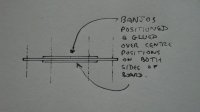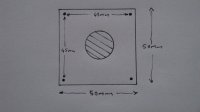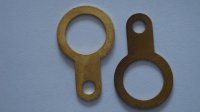hope that helps:
could you please send me a current rating or estimate for your power
distribution board. I am using it happily on one of my hexa now i want to
setup an octo with it but not sure if in an emergency full throttle
situation with a loaded 6kg octo a possible over 100A draw could cause some
issues. I was thinking of putti two boards of yours in parallel each
handling four ESCs.
100A for a short burst should be OK. Buut, if you're really dealing
with these kind of current - it might be better to simply use ex.
12AWG wire and make a power spider with connections for each ESC. No
amount of copper is going to help here. That being said.. the worst it
will do is heat up. If you don't plan to hover @ 100A (that would be
crazy anyway), short bursts will not heat up that much. What AWG wire
do you have going to the board? Just make sure your solder joints are
nice and clean and it should be ok. Also doubling the boards would
work, 3 motors per each and some fat wire to batteries. Depends on
your power distribution really.
-tc



